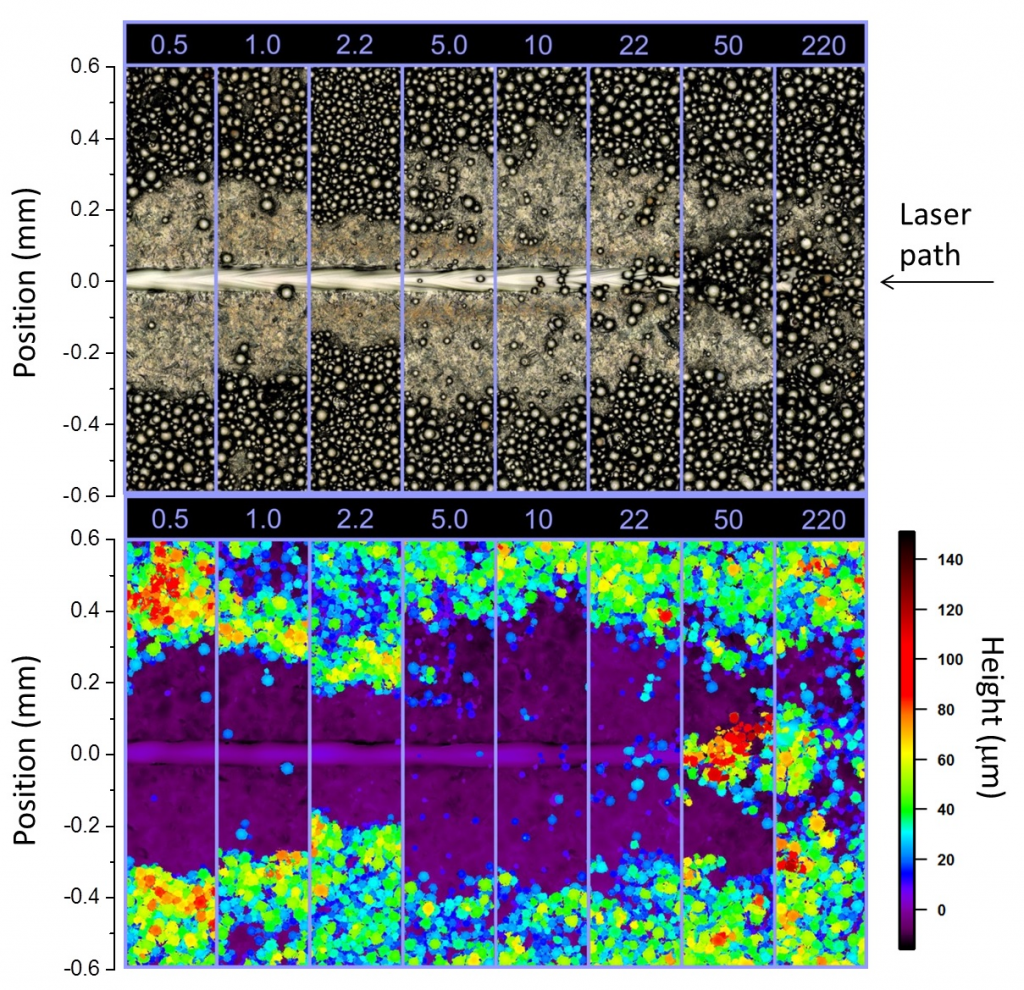Manyalibo Matthews (15-ERD-037)
Abstract
Recently, a growing number of laser-assisted advanced manufacturing methods have been introduced into industry, leading to reduction in cost, increase in processing speed, and access to material property modifications not possible with conventional processing. While seemingly simple, the process has many complex parameters: laser beam power, size, scan speed, powder material parameters, powder size and distribution over the ball-milled powder sizes, and powder thickness. The optimal processing parameters are determined mainly empirically for specific materials and for powders only. To further improve selective laser melting, we must address several materials challenges. We are pursuing an investigation of the physics of laser-induced melting of metal powder layers. Our ultimate goal is to expand the scientific foundation associated with laser-assisted manufacturing processes through well-posed physics experiments and predictive modeling and simulation. We plan to (1) develop a selective laser-melting optical test bench with in situ diagnostic capability; (2) execute experiments to capture the mesoscale thermal and morphological evolution of metal powders irradiated with laser light under varying conditions; (3) simulate laser absorption, heat transport, phase transitions, and surface wetting in conjunction with an arbitrary Lagrangian–Eulerian three-dimensional hydrodynamics code; and (4) explore new methods to process metal powders, including feedback control and laser beam shaping.
Our primary experimental deliverable will be a functioning test bench that can be used to study laser-assisted manufacturing processes in situ under a wide variety of conditions. A mesoscale computational capability being developed in the arbitrary Lagrangian–Eulerian three-dimensional code will be validated using experimental data, allowing fine-tuning of model parameters and guidance to full-scale material processing systems. We expect to address the detailed physics of laser absorption, dynamic heat transport, and material response of the selective laser-melting process. Finally, we aim to deliver an optical diagnostic solution useful in production-scale laser-processing platforms.
Mission Relevance
Our research project addresses the Laboratory's strategic need for more agile and responsive material development and manufacturing techniques. The resulting validation of hydrodynamics code models will advance laser-assisted additive manufacturing as an integral part of the advanced materials and manufacturing core competency. Several LLNL capabilities, including lasers and optical materials, high-performance computing, and materials and advanced manufacturing, will be combined to probe the fundamental materials science and physics of laser-based surface processing of complex morphologies, leading to significant improvement to laser-assisted manufacturing capabilities.
FY15 Accomplishments and Results
In FY15 we (1) designed, built, and commissioned a test bench for performing selective laser melting experiments; (2) exposed metal substrate and powder samples (such as aluminum, stainless steel, and titanium) to 1,070-nm laser light in a vacuum chamber at low pressure and in inert gas or air; (3) verified that the test bench covers process-parameter ranges of most commercial metal-powder-bed three-dimensional printers by repeating a published experiment performed on a commercial system; (4) found that high-speed thermal-emission video revealed a complex, molten-droplet ejection process, which was compared to final-track morphology; and (5) tested analytic models based on absorptivity and temperature measurements, as part of a summer student project.
Publications and Presentations
- Chapman, C. A. R., et al., “Engineering on-chip nanoporous gold material libraries via precision photothermal treatment.” Nanoscale 8(2), 785 (2016). LLNL-JRNL-673746. http://dx.doi.org/10.1039/c5nr04580k
- Hardee, C., "Simulating laser–material interactions." COMSOL News 2015, 17 (2015). LLNL-JRNL-676176.
- Matthews, M., “IR Optics: Processing optics using IR lasers.” Laser Focus World 51(8) (2015). LLNL-JRNL-676176.






